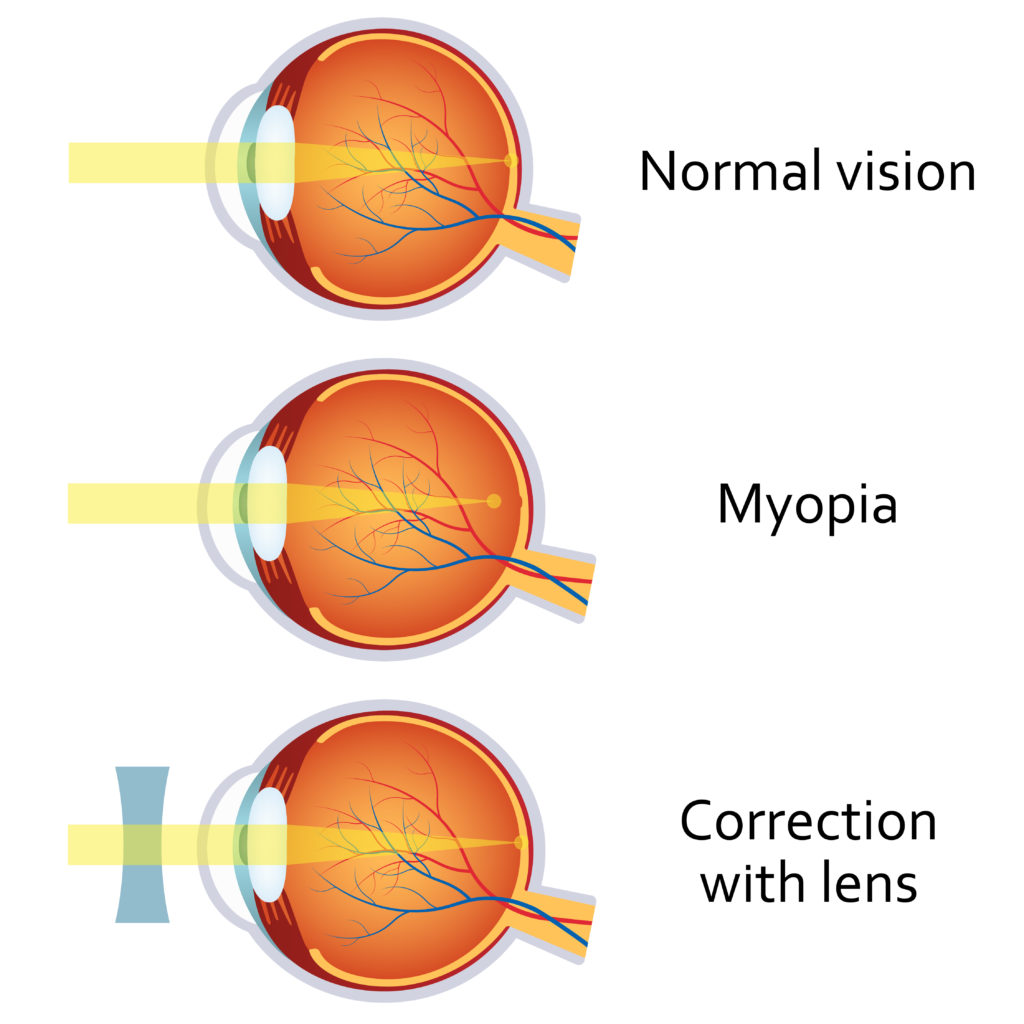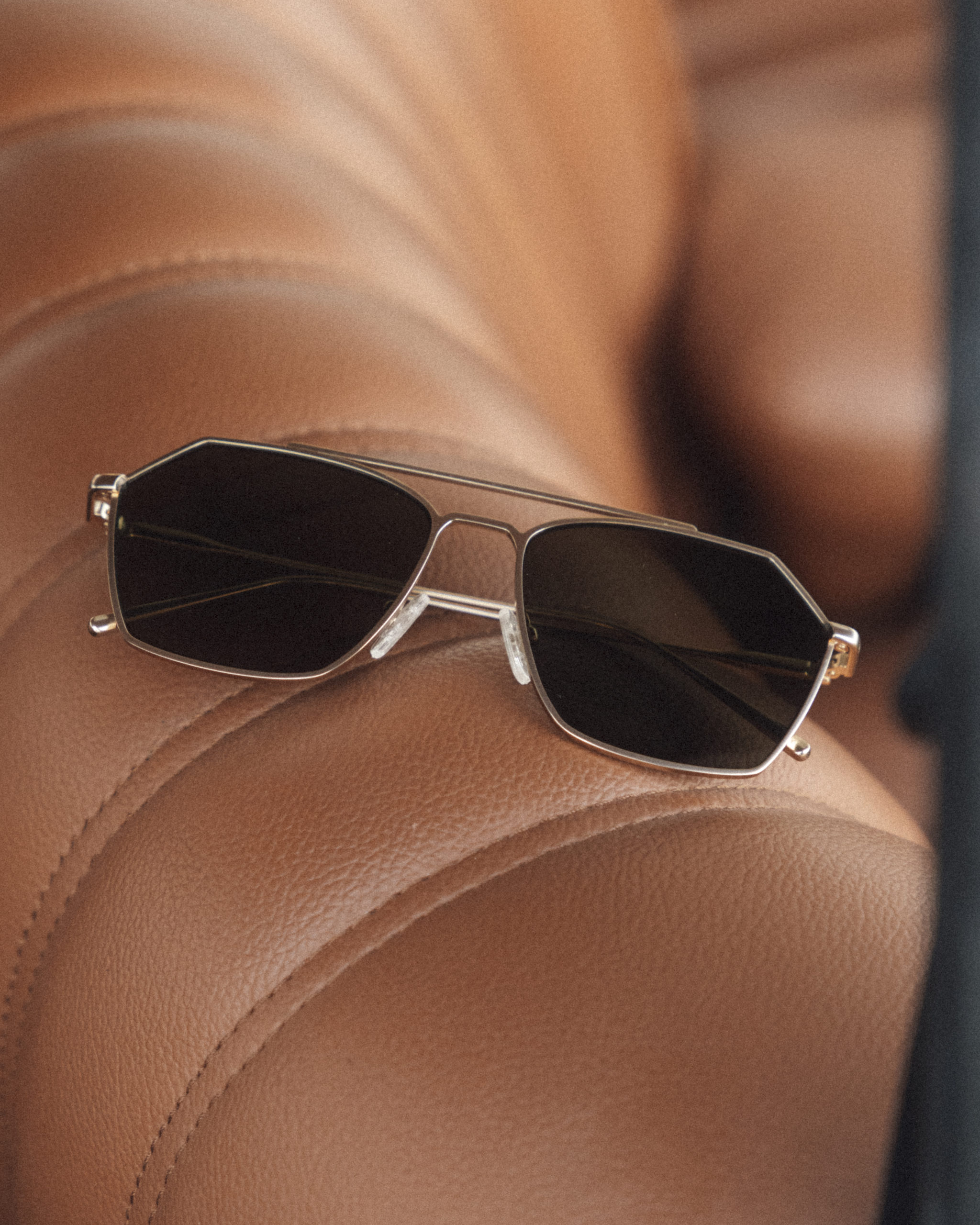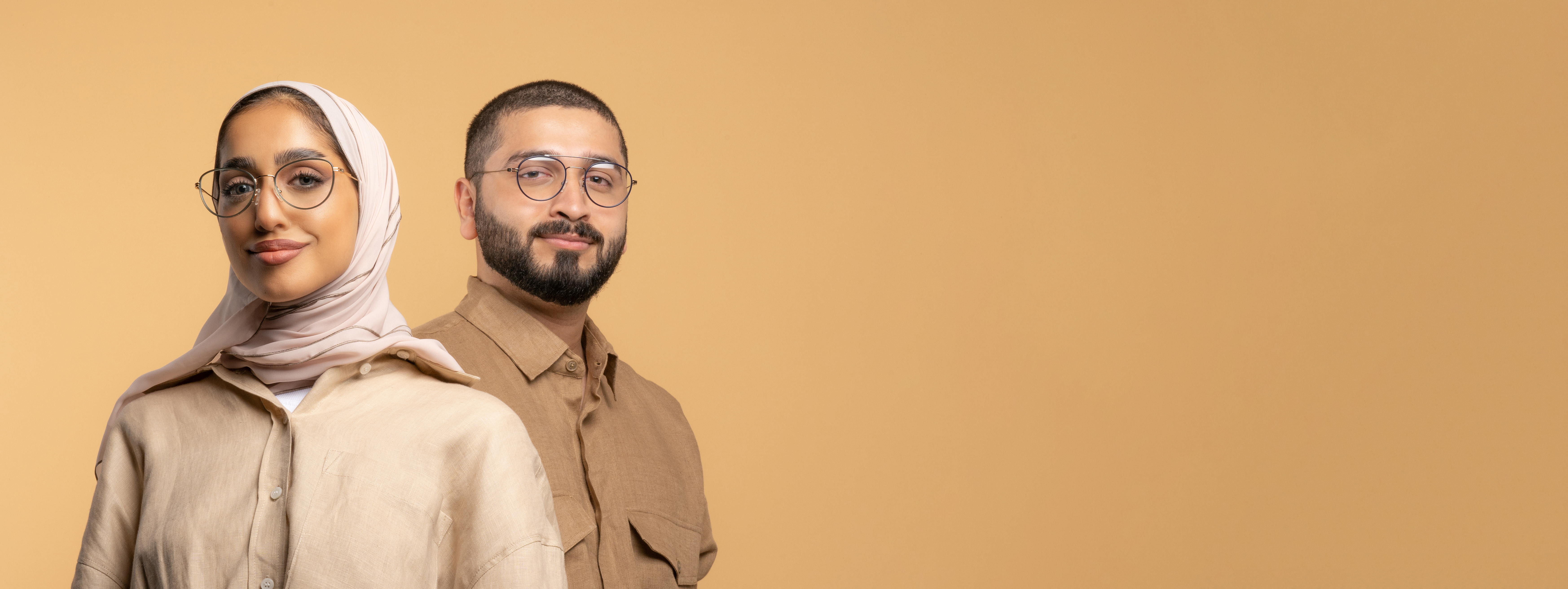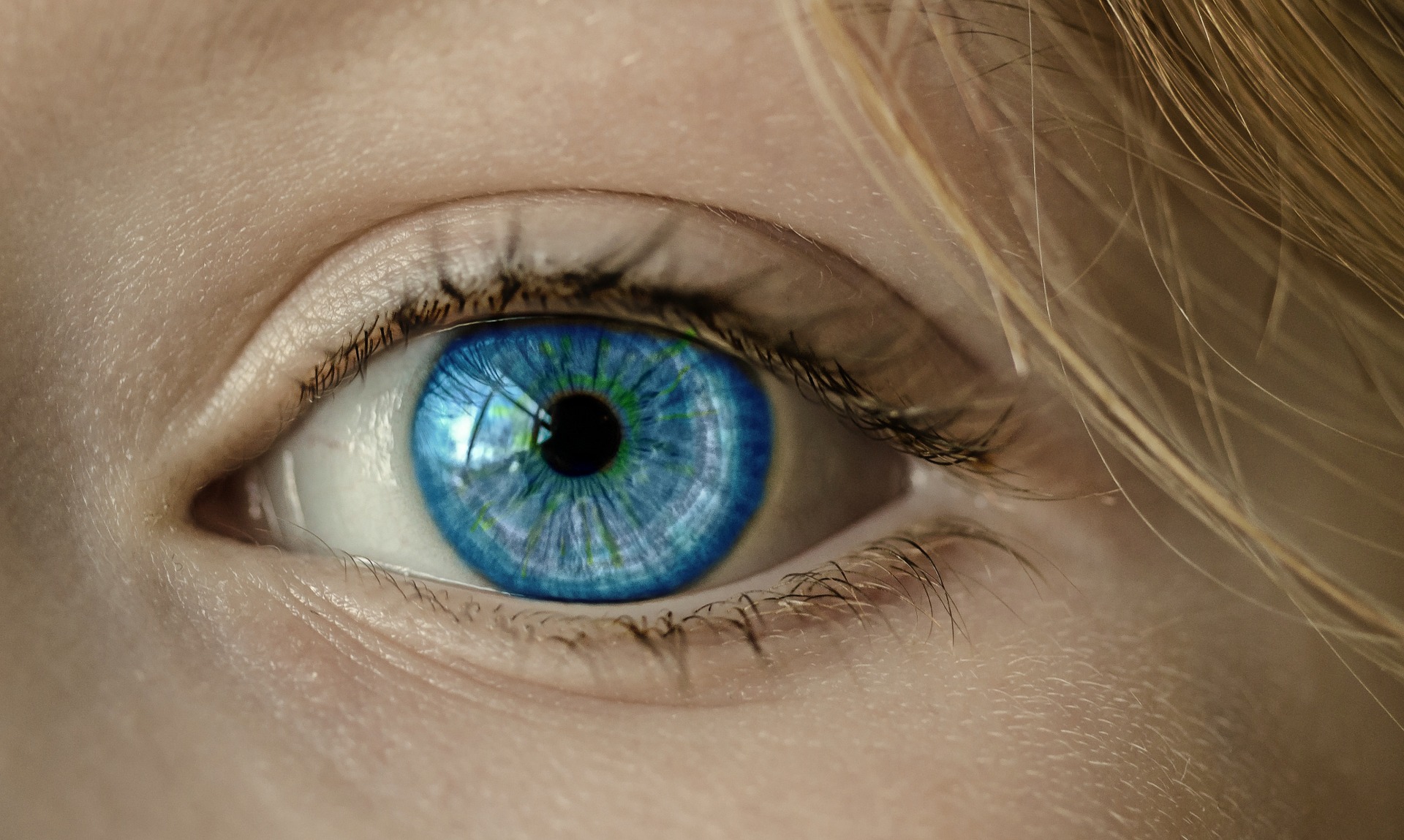In order to see, the eyes need light. A ray of light can get reflected, deflected, absorbed or bent, depending on the various substances that it encounters on its course. When light passes from one medium to the other, such as through water or a lens, it gets refracted or bent on its path. There are certain structures in the eye that have refractive properties that are very similar to the lenses of water and have the ability to bend the rays of light onto a precise point of focus which is critical for sharp vision. Refraction happens when the light rays travel through the clear, curved front surface of the eye. The lens that is naturally present in the eye also helps in bending the light. Even the tear film present in the eye has refractive abilities.
How does the eye see?
The mechanism of vision begins when rays of light that reflect off the objects pass through the optical system of the eye and are then refracted and eventually focussed into a point of sharp focus. For normal vision, this focus point should be on the retina. The retina is that part of the eye that covers the inside of the back of the eye. It has photoreceptor cells that are light-sensitive and capture images more or less like a camera captures images when it is exposed to light. These images are then transferred through the optic nerve of the eye to the brain where they are interpreted.
In the same way as a camera’s aperture is adjusted to modify the amount of light that is required to expose a film adequately, the pupil of the eye constricts or widens to adjust the amount of light that reaches the retina. When it is dark, the pupil widens and when the light is very bright, the pupil constricts.
What are refractive errors?
Refractive errors are essentially a type of vision problem that makes it difficult for a person to see clearly. They are the most common type of vision problem. They are easy to detect and can be treated with the help of prescription eyeglasses, contact lenses or surgery. Refractive errors are broadly of 4 main types:
- Myopia or near-sightedness which makes objects that far away appear blurry
- Hyperopia or farsightedness which makes objects that are close appear blurry
- Astigmatism which makes nearby and faraway objects appear distorted and blurry
- Presbyopia which makes it difficult for older adults to read and see objects up close
The common symptoms of refractive errors include blurry vision, double vision, hazy vision, eye strain, headaches squinting, difficulty while working on the computer or while reading, seeing glare around bright lights.
What causes refractive errors?
The ability of the eye to focus the rays of light effectively and sharply on the retina depends primarily on 3 factors:
- Eye length: if the eye is too short, the light is not able to refract or focus by the time it reaches the retina. This leads to farsightedness or hyperopia. If the eye is too long, the light gets refracted before it reaches the retina, leading to myopia or near-sightedness.
- The curvature of the cornea: if the cornea is irregularly shaped and is not perfectly spherical, the light gets focused or refracted irregularly leading to astigmatism. A person may have myopia or hyperopia with or without astigmatism.
- The curvature of the lens: if the lens of the eye is curved too steeply in comparison to the curvature of the cornea or the eye, it causes near-sightedness. If the lens is too flat and lacks curvature, it results in farsightedness.
Now that we understand how the eye sees and what refractive errors mean, let us look at each type of refractive error in further detail to understand each one better.
MYOPIA
Myopia is also known as near-sightedness is the most common refractive error in people who are below 40 years of age. Studies suggest that in the year 2000 globally, around 25% of the people had myopia and by 2050, it is estimated to affect around half of the world’s population. As the name suggests, people with near-sightedness or myopia have difficulty seeing objects at a distance but they can see them clearly when held close.
What are the symptoms of myopia?
People with myopia have difficulty seeing distant objects clearly and reading road signs but they are able to see clearly when reading a book or while using a computer. In addition to blurred vision, people with myopia may have additional symptoms such as eye strain, squinting, and headaches. A person with myopia may feel fatigued while playing sports or while driving. Children with myopia usually have trouble reading the blackboard at school.
What causes myopia?
Typically, myopia begins in childhood, and the risk increases if there is a family history of myopia. Most of the time, myopia gets stabilized in early adulthood, but sometimes it may continue to progress with age. Myopia occurs when the eyeball is either too long or the cornea is too curved. Due to this, the light that enters the eye does not get focussed correctly. The image formed gets focused in front of the retina, instead of focusing on the retina. This causes the image to appear blurred, leading to near-sightedness or myopia. On the basis of the cause, myopia is of two types- High myopia and Degenerative myopia.
High myopia is a more serious form of myopia in which the eyeball increases in size beyond the normal limit, becoming too long from back to front. So, not only does it become difficult to see things at a distance, it also increases risks of other eye conditions such as glaucoma, cataract, and retinal detachment.
Degenerative myopia is also known as the malignant or pathological myopia. It is a rare condition and can be hereditary. In this condition, the eyeball increases in size very quickly, causing severe myopia. This can happen around teenage or adult years. In addition to myopia, there may be a risk of other problems such as glaucoma, retinal detachment and abnormal growth of blood vessels in the eye.

How is myopia diagnosed and treated?
Myopia is a diagnosis with the help of an eye examination and is treated with the help of glasses, contact lenses or refractive surgery. Depending on the severity of myopia, people with myopia may need to wear their glasses or contact lenses all the time or only when they need very clear distant vision such as while driving, reading from a blackboard or while watching a movie.
For myopia, the preferred options for eyeglass lenses include high index lenses (for lighter, thinner lenses) and lenses that have an anti-reflective coating. They can also consider photochromatic lenses that protect the eyes from harmful UV rays and high-intensity blue light. People with myopia, the first number on the prescription for glasses or contact lenses (spherical)will be preceded by a minus sign (–). The higher the number, the more near-sighted a person is. For example, -2.00 is stronger than -1.50.
There are many options in contact lenses for correcting nearsightedness. While choosing contact lenses in children, ortho-K contact lenses can be a great choice. These are specially designed contact lenses that not only correct near-sightedness, but they may also help in controlling the progression of myopia in children. Similarly, multifocal contact lenses have been shown to be as effective as ortho-K lenses in children.
People with myopia can also opt for refractive surgery which can reduce or even eliminate their need for contact lenses or glasses. Refractive surgery can help in reducing or even eliminating the need for glasses or contacts. The most commonly performed procedures for myopia include:
LASIK (laser-assisted in situ keratomileusis) is the most commonly performed procedure for myopia. In this surgery, the surgeon uses a laser to create a thin flap on the outermost layer of the cornea. The cornea is sculpted with another laser and then the flap is placed back into its place.
Photorefractive keratectomy (PRK)
This is also commonly known as PRK, and it uses a laser for sculpting the middle layer of the cornea. This flattens out the curve of the cornea and helps the light to get focussed on the retina.
For people with high myopia, atropine drops, or specially designed contact lenses have been shown to slow the progression of the disease. In some cases, doctors may recommend cataract or clear lens replacement surgery.
Can myopia be controlled?
As more and more people are getting diagnosed with myopia, there has been a steep incline in research to help find ways to control the progression of myopia in childhood. Many new techniques have been tried such as fitting children’s gas permeable lenses, progressive lenses, and bifocal lenses. But all of these techniques have delivered mixed results. Clinical trials conducted recently have shown that administering low dose atropine eye drops can slow the progression of myopia in children of school-going age. Some kids, however, did not seem to respond well to atropine drops.
HYPEROPIA
When a person is able to see objects clearly when they are far, but has problems seeing things clearly up close, it is known as farsightedness or hyperopia. In this condition, the eye is able to focus better on distant objects than on those that are close. Hyperopia or farsightedness is a common refractive error that primarily affects children.
Children who have mild to moderate hyperopia are able to see both far away and close without any correction because their muscles and lenses have the ability to squint quite well and overcome farsightedness. But with age, it gets difficult to squint well, making it harder to focus on things at a distance.
In a recent study that analyzed over 40 international studies, it has been found that the prevalence of farsightedness ranges from 8.4% among 6-year-old children, 2-3% in children between the ages of 9-14 years and around 1% in children around 15 years of age.
What are the symptoms of hyperopia?
People with hyperopia may have blurry vision and trouble focusing on nearby objects. They can sometimes have headaches or eye strain. They may squint too often and may feel fatigued when performing work at close range.
What causes hyperopia?
In a normal eye, the cornea (outer most layer of the eye) and the eye lens focuses the image on the surface of the retina. In hyperopia, the light entering the eye focuses behind the retina instead of getting focussed directly on it, making the image look blurry. This is mainly due to the fact that the eyeball of a person who has hyperopia is shorter than that of a normal person. There are many children who are born with hyperopia and some of them outgrow it as their eyeball lengthens with normal growth.

How is hyperopia diagnosed and treated?
Hyperopia or farsightedness is diagnosed with the help of an eye exam. Treatment involves changing the way the light rays bend into the eyes. Treatment options include prescription glasses, contact lenses or vision correction surgery. The glasses and contact lenses prescription for people with hyperopia begins with plus numbers such as +1.50, +2.50. Depending on the severity of the condition, people with hyperopia may need to wear their glasses or contact lenses either all the time or only when working on the computer, while reading or doing close up work.
For correcting farsightedness, aspheric high index lenses are a good option, especially for those with a stronger prescription. These lenses are lighter, slimmer, thinner and offer a more attractive profile. The aspheric lenses also help in reducing the magnified ‘bug-eye’ appearance that is often caused by people with hyperopia.
The only drawback with high index aspheric lenses is that they tend to reflect more light than the standard plastic lenses. For optimal comfort and appearance, lenses that have anti-reflective coating are also available and they help in minimizing distracting lens reflections.
In children, it is best to choose eyeglasses that are designed from lightweight polycarbonate lens material as they offer impact resistance and superior comfort. Another great option for kids is photochromatic lenses that have the ability to darken in response to sunlight as they are well suited for those who spend a significant amount of time outdoors.
For those who have significantly high hyperopia, contact lenses are typically preferred over prescription eyeglasses. This is because of the fact that contact lenses offer more natural vision and better peripheral vision as compared to eyeglasses for correcting hyperopia.
People with hyperopia can also opt for eye surgery to correct their refractive error. The most common surgical procedure to correct farsightedness is LASIK. In this procedure, the doctor makes a flap on the outermost part of the cornea and then sculpts the tissue inside the eye using a laser. The flap is then moved back to its place.
ASTIGMATISM
Astigmatism is a type of refractive error in which the eye isn’t completely round due to irregularities in the shape of a person’s cornea. As a result of this, the eye is not able to focus the light equally on the retina resulting in blurred or distorted vision. It may be present since birth or may develop later in life. Astigmatism usually occurs alongside other refractive errors such as myopia and hyperopia. It can be easily fixed with the help of eyeglasses, contact lenses or surgery.
What are the symptoms of astigmatism?
The most common symptom of astigmatism is blurred vision or distorted vision at all distances. Other symptoms include headaches, squinting, eye strain, trouble seeing at night and eye irritation.
What causes astigmatism?
Astigmatism usually results from an irregularly shaped cornea. this type of astigmatism is known as corneal astigmatism and is the most common. Normally, cornea has a symmetrical, round shape. But in astigmatism, the cornea is shaped like an egg, with one meridian being much more curved than the meridian which is perpendicular to it. In astigmatism, the meridians of the eye which are flattest and steepest are called principal meridians. In some people, astigmatism results from a distortion in the shape of the lens situated inside the eye. This is known as lenticular astigmatism. Rarely, an eye condition known as keratoconus can also cause astigmatism. In keratoconus, the cornea (front clear part of the eye) is cone shaped and thinner than usual.

What are the types of astigmatism?
There are broadly three main types of astigmatism:
- Myopic astigmatism: In this type of astigmatism, one or both the principal meridians of the eye are myopic or near-sighted.
- Hyperopic astigmatism: In this type of astigmatism, one or both the principal meridians of the eye are hyperopic or farsighted.
- Mixed astigmatism: In mixed astigmatism, one principal meridian is near-sighted while as the other principal meridian is farsighted.
- Astigmatism can also be regular or irregular. In regular astigmatism, the principal meridians are perpendicular to one another (90 degrees apart) while as in irregular astigmatism, the principal meridians are not perpendicular to one another.
- Most of the time, astigmatism is a regular corneal type, resulting from the oval shape of the eye.
- Irregular astigmatism could be a result of eye injury that leads to scarring of the cornea, or due to certain eye surgeries or from keratoconus.
How is astigmatism diagnosed?
The symptoms of astigmatism progress slowly and it is diagnosed with the help of a complete eye examination at the eye doctor’s clinic. During the eye exam, the doctor tests the sharpness of eyesight with the help of eye charts. In addition, a number of other comprehensive investigations are carried out, such as:
- Phoropter: The doctor makes the patient look through a series of lenses in order to find the lenses that give him/her the clearest vision.
- Topographer/ Keratometer: This equipment helps the doctor to measure the curvature of the cornea.
- Autorefractor: It works by shining light into the eye and measuring how the light changes as it bounces off from the back of the eye. This device helps in giving the doctor an idea of the lens that the patient will need.
The astigmatism prescription has many numbers on it which are measured in dioptres. The first number written on the prescription is known as a spherical correction. If this number has a minus sign, then it means that the person is near-sighted. A plus sign indicates farsightedness. The higher the number, the blurrier the vision. The second number on the prescription is for cylindrical correction. This indicates how strong the astigmatism is. The third number denotes the axis, which indicates the location of astigmatism on the cornea. Letters OD denote the right eye and OS denotes the left eye. For example, a prescription of OS -1.5 X -2.00 X150 means that the left eye has 1.5 dioptre of near-sightedness and 2 dioptres of astigmatism at 155 0 degrees on the cornea.
What is the treatment of astigmatism?
Almost all cases of astigmatism can be corrected with the help of glasses or contact lenses. broadly, there are two treatment modalities for common levels of astigmatism:
- Corrective lenses: these include prescription eyeglasses or contact lenses. People with astigmatism need specially designed soft contact lenses known as toric lenses. These lenses are designed to bend more light in one direction than in the other. In people with severe astigmatism, gas permeable rigid contact lenses may be prescribed. These lenses may be worn for a procedure known as orthokeratology in which the lenses help to reshape the cornea and they need to be worn during sleep too.
- Refractive surgery. The shape of the cornea in astigmatism can be changed with the help of laser surgery, thereby correcting astigmatism. The surgical procedures include LASIK and PRK. These procedures can be conducted in those people who have otherwise healthy eyes without any corneal scars or retinal problems.
Astigmatism in children
Many newborns are born with astigmatism, and most of the time it goes away before they turn 1-year-old. Since children cannot usually tell that they are having trouble with their vision, they need to be taken for regular eye check-ups once they turn 6 months old. Kids with uncorrected vision could have a hard time at school and this could sometimes be misdiagnosed as a learning disorder. So, timely eye exams and follow-ups are very important in children of pre-school and school-going age.
PRESBYOPIA
Presbyopia is a type of refractive error that occurs with age as the eye gradually loses the power to focus on near objects. In most people, presbyopia occurs after the age of 40. It usually starts as having difficulty seeing small print clearly such as reading from a book or from the phone.
There is no way to prevent presbyopia, even when a person has had no vision problems earlier. Even people who have myopia or near-sightedness start noticing that they have blurry vision when they wear their usual prescription glasses or contact lenses to correct their distant vision.
Studies suggest that nearly 2 billion people have presbyopia around the world. Presbyopia may be associated with emotional problems as it may be perceived as a sign of aging and people may struggle with accepting this life event.
What are the symptoms of presbyopia?
A person with presbyopia has trouble reading so he/she will hold his/her phone or reading material farther from the eyes in an attempt to see or read them more clearly. When a person moves things farther away from the eyes, the objects tend to get smaller in size and hence this becomes a partially successful and a temporary solution to managing presbyopia. Some people with presbyopia are able to see close objects clearly but they have frequent headaches, visual fatigue, and eye strain, making near vision tasks and reading more tiring and less comfortable.
What causes presbyopia?
Presbyopia is directly linked to the aging process. It happens because, with age, the lens inside the eye thickens gradually and loses flexibility, making it hard to focus clearly.
The age-related changes that occur in presbyopia are due to changes within the proteins in the lens, which makes the lens less elastic and harder over time. The changes also occur within the muscle fibers that surround the lens of the eye. As the elasticity reduces, the eyes find it hard to focus on close objects clearly.
How is Presbyopia diagnosed and treated?
Presbyopia is detected with the help of an eye examination. Treatment options include prescription glasses, contact lenses and rarely surgery.
Eyeglasses
Prescription glasses that have progressive lenses are the most popular treatment option for presbyopia for most people who are above 40 years of age. Progressive lenses are line-free multifocal lenses that help to restore crystal clear vision and also ensure optimal vision at all distances.
People with presbyopia may also be prescribed eyeglasses that have bifocal lenses. The shortcoming with bifocals is that they provide a limited range of vision.
People with presbyopia may become more sensitive to light as well as glare as a result of age-related changes in the eyes. In these people, photochromatic lenses that darken in sunlight automatically offer an ideal solution in such cases.
Another option for people with presbyopia is the reading glasses. These eyeglasses are worn only when a person wants to see small print close objects clearly.
People who wear contact lenses may be given reading glasses that can be used while keeping contact lenses on. People with presbyopia are often recommended to wear glasses that have lenses with anti-reflective coating. This anti-reflective coating helps to eliminate that could be distracting and lead to eye strain. They also help to cut down glare and enhance visual clarity for night driving.
Contact lenses
The contact lenses for people with presbyopia could be multifocal contact lenses, which are available in gas permeable or soft lens materials. Another option for presbyopia is monovision contact lens correction. In this, one eye is given a prescription for near vision while the other eye wears a distance prescription. The brain learns to favor one eye over the other eye to carry out different types of tasks.
Some people are delighted with this solution, but some people complain of loss of depth perception and lowered visual acuity. Since presbyopia is age-related and the eyes keep gradually changing with age, people with presbyopia glasses or contact lenses will need gradual modification over time.
Presbyopia surgery
For those who do not want to wear glasses or contact lenses for correcting presbyopia, there are many surgical treatment options available. One of the surgical options that are becoming increasingly popular is the implantation of a corneal inlay. It involves placing an implant in the eye which is not dominant. The corneal inlay increases the depth of focus in the treated eye, thereby decreasing the need to wear reading glasses while keeping the quality of distant vision intact. The surgery, however, may not be an option for everyone with presbyopia and it is best to consult a refractive surgeon for a comprehensive eye examination to find out if he/she is an ideal candidate for presbyopia surgery.







